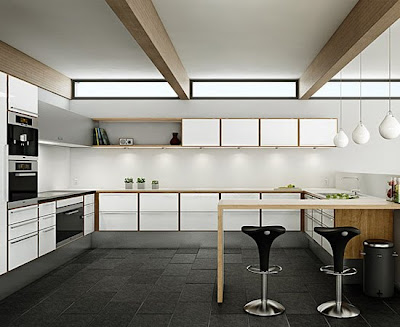Market Watch
With housing values in the tank and any substantial price appreciation in the distant future, sinking money into a remodeling project is a tough sell for many homeowners now.
In general, you won't recoup as much of a project's cost at resale as you might have several years ago, according to estimates from Remodeling Magazine's Cost vs. Value Report, which weighs the costs of various improvements against their resale value. And while labor costs might be more negotiable in today's market, materials aren't getting any cheaper, said Sal Alfano, editorial director of the magazine.
"Homeowners right now are a little shell-shocked. Houses, up to three years ago, were like a bank account... people were spending money freely on sunrooms and outdoor decks and they were always getting it back," said David Lupberger, home improvement expert for ServiceMagic.com, a Web site that connects homeowners with prescreened home service professionals.
Those who are remodeling are generally opting for fewer frills and less expensive finishes, Alfano said. Instead of building large additions, they're trying to better utilize space they already have. They're seeking energy-efficiency upgrades and low-cost cosmetic improvements that make a home more comfortable and appealing.
Added Alfano: "Instead of saying 'Yes, I want the best of everything,' they're making choices right now. They realize they have to make a decision on materials they want to use for counters and backsplashes and ironing centers. Their budget can't cover the best of everything.
"People are back to tradeoffs, projects are smaller."
"Homeowners right now are a little shell-shocked. Houses, up to three years ago, were like a bank account... people were spending money freely on sunrooms and outdoor decks and they were always getting it back," said David Lupberger, home improvement expert for ServiceMagic.com, a Web site that connects homeowners with prescreened home service professionals.
Those who are remodeling are generally opting for fewer frills and less expensive finishes, Alfano said. Instead of building large additions, they're trying to better utilize space they already have. They're seeking energy-efficiency upgrades and low-cost cosmetic improvements that make a home more comfortable and appealing.
Added Alfano: "Instead of saying 'Yes, I want the best of everything,' they're making choices right now. They realize they have to make a decision on materials they want to use for counters and backsplashes and ironing centers. Their budget can't cover the best of everything.
"People are back to tradeoffs, projects are smaller."
The little things
Even if resale isn't your top consideration, a check of the Cost vs. Value Report will still give an idea of projects that pack a punch. Home improvements that tend to excel on this list are those that have universal appeal -- and a reasonable price tag.
In terms of cost recouped at resale, seven of the top 10 projects in the 2009-2010 report were exterior-replacement projects, including windows, doors and siding.
A steel exterior door-replacement was the highest-ranked project on the list. It was also the least expensive, Alfano said. For an estimated cost of $1,172, real-estate agents who were surveyed for the report estimated that 128.9% would be recovered at resale. View the Cost vs. Value Report.
"If you have a door that really needs help, you're not spending that much money and you're vastly improving the first impression" of a home, he said.
Painting, replacing older fixtures, and cleaning carpets also are inexpensive ways to spruce up a home without hiring a large home remodeling company -- whether you're planning on selling it soon or not, Lupberger said. "There are a lot of cosmetic things we postpone because of how busy we are," he said.
For budget-conscious homeowners, changing door handles and putting a new finish on interior doors can also make a huge difference, said David Mackowski, of Quality Design and Construction in Raleigh real estate, N.C.
Remember, too, that improvements that make a home more efficient can cut down on utility bills, saving money over the long term. Some products that improve efficiency are eligible for federal tax credits through the end of 2010, and certain appliances qualify for state rebate programs as well.












